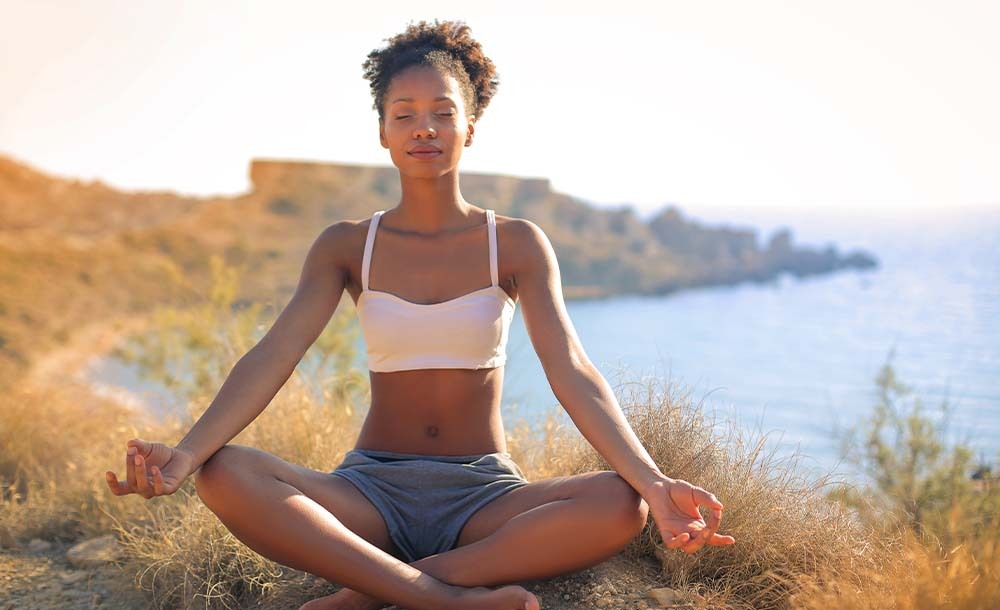
26 Mar Top Meditation Tips for Beginners
Meditation – the practice of training the mind into a state of calm and focused consciousness – is a wonderful way to boost the wellbeing of your body, mind and spirit. Anyone can enjoy the benefits of meditation; but starting the practice from scratch might seem a little intimidating at first. Here are a few simple meditation tips for those starting out. We hope you find these useful in guiding you towards a more fulfilling meditation routine. Namaste!
Did You Know? The English word “meditation” comes from the Latin meditatio, from a verb meditari, which means “to think, contemplate, devise or ponder”. The Tibetan word for meditation, Gom, translates as “to become familiar with”; this is strongly linked to the idea of training the mind to be familiar with states of concentration, compassion, understanding and patience.
Basic Meditation Practice
- Sit comfortably, either cross-legged on the floor or on a meditation cushion (zafu). Keep a tall spine, with your shoulders back and down.
- Close your eyes, or focus on one specific point straight ahead of you, such as a candle.
- Breathe naturally. Notice the movements of your body with each inhalation and exhalation.
- Keep your breathing natural and don’t try to hold or control your breath. Every time your thoughts start to wander, bring your attention back to your breathing.
- Start with a session of 5 to 10 minutes; in time, you will be able to work up to longer stretches of meditation.
- Once you reach your established time limit, slowly open your eyes, stretch and take a few deep breaths before standing up.
Meditations tips for beginners looking to make the most of their practise:
Understand the purpose
What is it that you want to gain from meditation? Are you looking to calm anxiety and balance emotions; to enhance feelings of peace and compassion; or simply to improve your overall wellbeing? Whatever your reasons, establishing why you want to meditate will motivate you to put it into practice.
Create a dedicated space for meditation
This means creating a physical space for meditation as well as a mental one. Set aside a simple, uncluttered space where you can meditate in peace without interruptions. Try to avoid meditating in the same areas you work in or sleep in. Light a candle, burn a stick of incense or play some soft music as you settle in for a meditation session. And remember to switch off that cell phone!
Establish a routine
Make meditation a habit, by setting aside some time every day to practice. The best time to meditate is first thing in the morning, as your mind won’t yet be crowded with the thoughts and experiences of the day. It will also help you to take on the rest of the day with an improved sense of calmness and clarity.
Using sight, sound and scent
Candles, incense and music aren’t just there for aesthetic appeal; they work to get you into the right frame of mind for meditation. Scents like sandalwood help to improve mental focus, clarity and concentration, making sandalwood a favourite choice in temples and monasteries. Meditating with closed eyes can be challenging for beginners; a candle can be used as a visual focal point instead. Calming music can also help to clear your head and relieve feelings of stress.
Observe but don’t judge
When you become distracted or your thoughts start to crowd in, simply notice the sense of frustration or unease that it brings; give your mind time to settle and gently guide your focus back to your breathing. Don’t be too hard on yourself! Meditation is intended to reduce stress, not add to it.
Check out our blog post on how to max your meditation practice naturally, with a beautiful range of meditation cushions and aromatherapy products.



No Comments